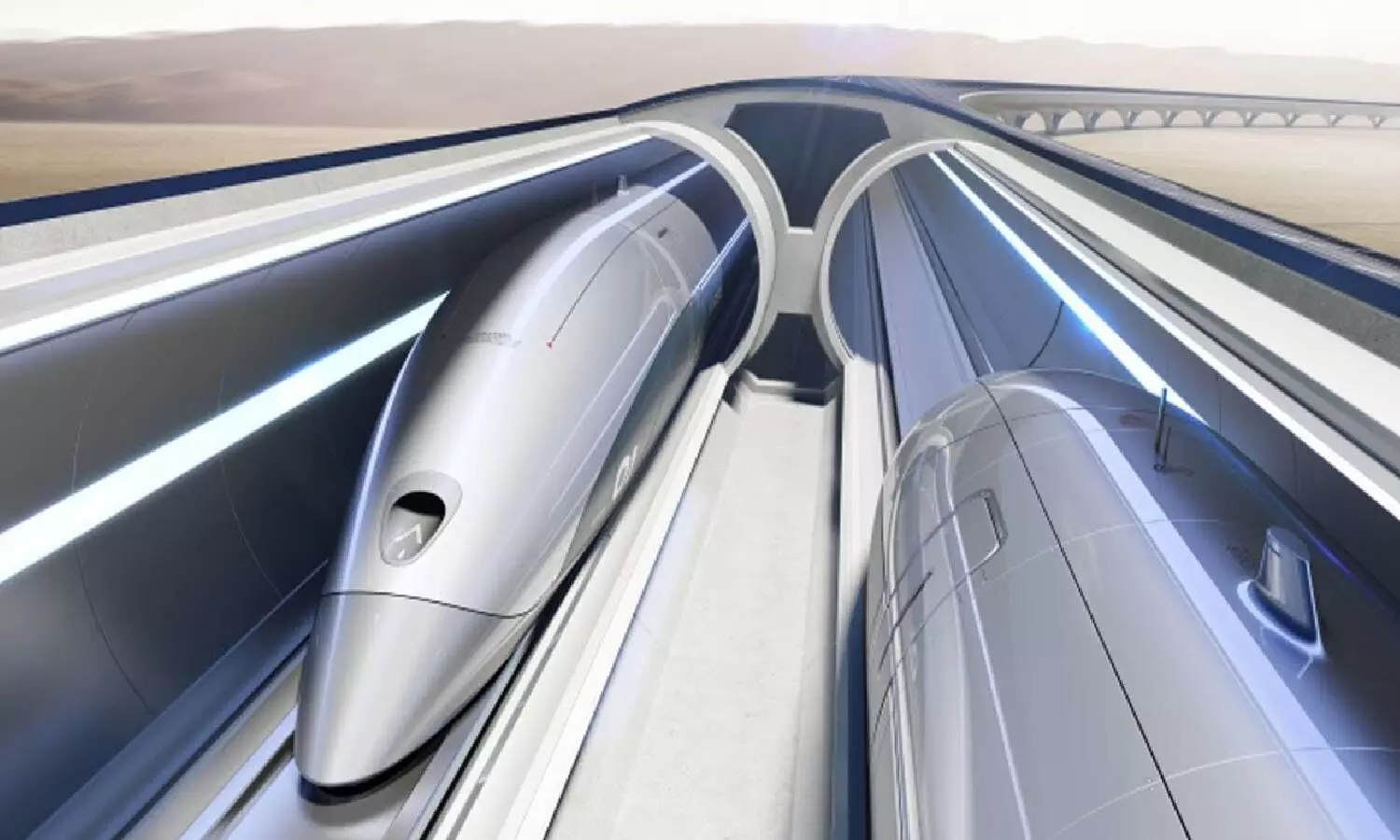Bizz Buzz explainer: Hyperloop the fastest mode of transport
By 2030, Hyperloop might be a primary go-to-means of transport
image for illustrative purpose

Hyderabad Hyperloop is a proposed high-speed mass transportation system. It could see passengers and freight travelling at over 1100 km/h about at airline speeds while being energy efficient compared with existing high-speed rail systems. Hyperloop could be cheaper and faster than train or car travel, and cheaper and greener than air travel.
The Hyperloop concept has its roots in an idea proposed by George Medhurst, a mechanical engineer from London. He pioneered the use of compressed air as means of propulsion in 1799 and subsequently developed under the name's pneumatic railway, atmospheric railway or vactrain. The concept later came into light when Elon Musk, the founder of SpaceX and Tesla mentioned it in 2012 as a paper concept.
How does it work?
It has three major components, a tube, pod, and terminal. The tube is a large sealed, low-pressure system that can be constructed above or below ground. A coach runs inside this controlled environment and is often referred to as a pod. The pod employs magnetic or aerodynamic levitation (using air-bearing skis) along with electromagnetic or aerodynamic propulsion to glide along a fixed guideway.
Hyperloop benefits
Well, in the recent times this has been a debatable topic as few support the concept and few don't. The supporters argue that Hyperloop could be cheaper and faster than train or car travel, and cheaper and greener than air travel. They claim that it is also quicker and cheaper to build than traditional high-speed rail. Therefore, it can be used to take the pressure off the gridlocked roads, making travel between cities easier, and potentially unlocking major economic benefits as a result.
Companies working on Hyperloop
Despite doing much to lay the groundwork for Hyperloop services, Musk initially said he was too busy to develop his own service. There are now a number of companies working to turn the idea into reality, including startups and others. Among them are Virgin Hyperloop One, HTT, TransPod, Arrivo, and others. Each is developing a slightly different set of technologies, but the fundamental underlying idea remains the same. Well, noting the recent developments we can say that Virgin Hyperloop One is running first in the race.
The cost factor
Most of the cost of the system lies in building the tube network, the overall cost of the tube, pillars, vacuum pumps, and stations is calculated at just over $4bn (about Rs 29k crore) for the passenger version of Hyperloop (Rs 51k crore for a slightly larger version that could also take freight). The cost of the each capsules was put at around $1.35 million, with 40 needed for the service, the cost of these is around $54 million (or $70 million for a mix of passenger and cargo capsules). When comparing to the traditional high-speed train system, it is 9 per cent lower.
When Hyperloop will be a reality?
Having a revolutionary transport comes at the cost of difficult challenges that the makers have to face, and the Hyperloop is not different. It has its set of challenges regarding its feasibility, production cost, technology, accident and safety measures etc.
Critics of Hyperloop have warned that travelling in the tube might be an uncomfortable experience, due to nausea-inducing acceleration, plus lateral G-force on bends in the route. However, questions need time to answer and that's what the makers are occupied with.
The makers of Virgin Hyperloop One say that the journey via Hyperloop will feel about the same as riding in an elevator or a passenger plane. Well, to witness this we have to wait, how long? The answers are with the makers who predicted that, by 2030 Hyperloop might be a primary go to means of transport.

